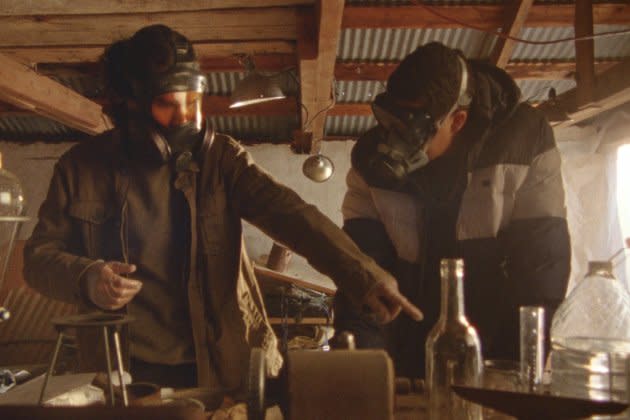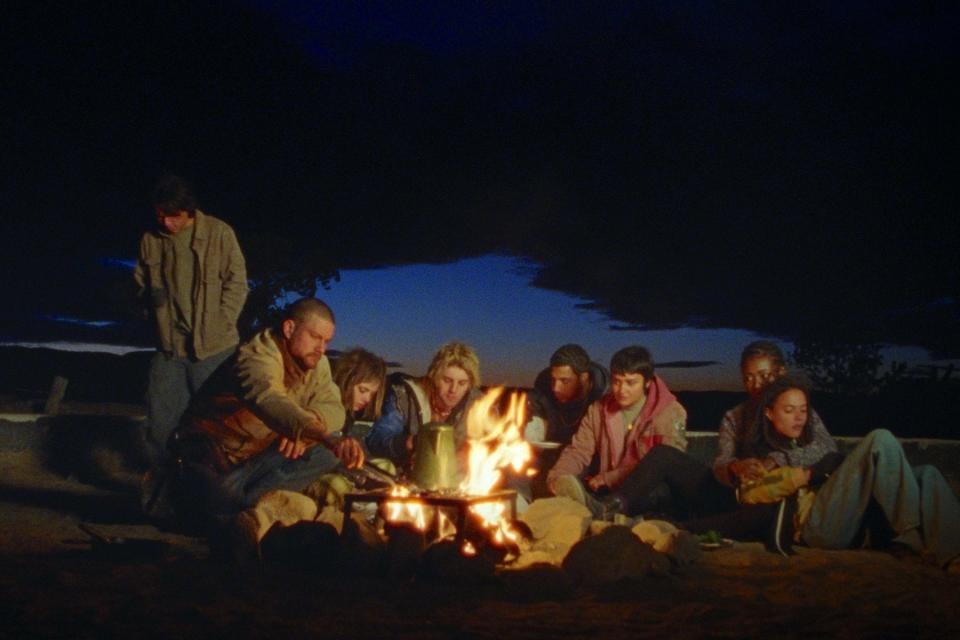‘How to Blow Up a Pipeline’ Is Here to Radicalize Gen Z
- Oops!Something went wrong.Please try again later.

A group of twentysomethings converge upon a small, seemingly abandoned house outside of Odessa, Texas. Two of them are former students, frustrated by the lack of urgency around climate change. One is a Native American from North Dakota, who does a series of D.I.Y. bombmaking videos under the name “Boomtalk.” There’s also a couple from Long Beach, California — one of them is dying from leukemia — and a gutter punk duo from Portland, Oregon. Only one person, a working-class husband and dad, is local.
But everyone has gathered together to do one thing: destroy an oil pipeline that’s representative of every corporation that puts profits above people, every pollution-causing problem, every project that’s destroyed landscapes, communities, and lives. The question isn’t just whether they will succeed or not. It’s also whether you should think of these eco-activists as rebels with a cause or simply righteous terrorists.
More from Rolling Stone
Barbie Ferreira on Leaving 'Euphoria': I Didn't Want to Play the 'Fat Best Friend'
What If the Power Rangers Were French, Horny, and Caused Cancer?
Jennifer Coolidge Jokes She's Once Again 'Surrounded by Gays' at 2023 GLAAD Media Awards
That second Q is the one that How to Blow Up a Pipeline has heaviest on its mind, even as it meticulously crafts a fictional thriller around Swedish author Andreas Malm’s 2021 nonfiction book. And make no mistake: This is a thriller, complete with the tension-ratcheting cinematic vocabulary, the cross-cut editing, the pulsing score, and the pacing of a ticking time bomb (literally and figuratively) that characterizes the best the genre has to offer. It may lack the you-are-there urgency of, say, The Battle of Algiers — famously used as a training tool for both the Black Panthers and members of the Pentagon in the post 9/11 era — but it’s still designed to cause sweaty palms and short-circuit nervous systems. And the way that filmmaker Daniel Goldhaber (Cam) pulls off what feels like a tightly wound Hollywood potboiler on what we imagine is little more than a studio caterer’s budget is, in itself, a textbook how-to example.
Yet this is still a film that takes its cues from a political screed that suggested, in no uncertain terms, “intelligent sabotage” and direct action as our only option left — preaching destruction as salvation, in order to cut through bureaucratic stalemates and the collective shrugging of shoulders regarding the eco-equivalent of an oncoming train. “Why I Sabotaged Your Property” reads the 21-font headline of a pamphlet that Xochitl (cowriter Ariela Barer) puts on the windshield of an SUV, right after she’s knifed its tires. Her introduction is just the first of several in a montage that lets all of the young players enter stage left(-wing) in a moment of flux and fury. Michael (Forrest Goodluck) is ditching a telltale cellphone. Alisha (Jayme Lawson) is rigging a security system in the name of an alibi, before picking up her ailing girlfriend Theo (American Honey’s Sasha Lane) en route. Shawn (Marcus Scribner) has… well, he’s picked up snacks for the road trip, but he’s still raring to go. Ditto Rowan (Kristine Froseth) and Logan (Lukas Gage), seen leaving a rave after doing bumps.
Only Dwayne (Jake Weary), the Texan with a blue-collar job and a baby on the way, is in a state of repose, given he’s the one with the most to lose. The pipeline that’s been targeted is a stone’s throw away from where he lives, and directly threatens the health and safety of his loved ones. Everyone has his or her reasons for doing what they’re about to do, all of which are made apparent in scattered, random flashbacks. But this stoic, salt-of-the-Earth everyguy arguably has the most immediate concerns. These idealists want to save the world. He wants to protect his home. Everyone risks being labeled as an enemy of the state. He’s not committing an act of terrorism, however, so much as practicing self-defense. Except where does that distinction begin and end?

How to Blow Up a Pipeline may be a disruption procedural, spending a lot of screen time detailing the act of making homemade bombs, organizing property demolition as a means of protest, coordinating subversive acts with the precision of a jewel heist. It’s also undeniably a grittier showcase for a cast of hot young faces pulled from Euphoria, black-ish, Runaways, The Society, Conversations with Friends, and other well-known TV series. Yet it’s also interested in exploring the line between expressing the language of the unheard in the name of progress (or survival) and the “unlawful” use of violence for political aims. Pipeline purposefully throws a sequence right in the middle of the movie that allows the ensemble to discuss whether what they’re doing makes them revolutionaries or criminals. The founding fathers and MLK are invoked. “Jesus was a terrorist!” cries Shawn, in a state of exaltation. Yes, the tone is somewhere between debate club and dorm-room sesh, but they’re still wondering where the lines are drawn, and why they keep getting blurrier even with the best intentions.
You can feel Goldhaber, his cowriters (which also include Jordan Sjol) and his actors trying to remain as observational and as close to neutral as possible about these bombers. Until the film finally gets to a point where it does have to choose whether it wants to glorify or vilify these kids, and there will likely be a lot of viewers who feel uncomfortable with the option that’s picked. It’s at that moment that, fictional narrative with an abundance of forward momentum or not, you remember the source material this is drawing from. How to Blow Up a Pipeline is a thriller, but it’s not just a thriller. It’s also aiming to be a Gen Z radicalization manifesto in the same spirit as the book, if not with the same rigor. I don’t ever see the Pentagon showing this to its employees. But I definitely see this playing on a lot of college campuses and provoking a lot of nodding heads.
Best of Rolling Stone

